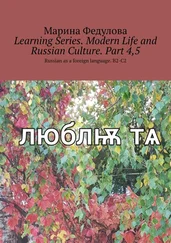6.4.1 An Introductory Exercise: Entering the Stage and Encountering an Object
The first exercise is a kind of transition to the actual improvisations. In this exercise, there are still no costumes and no red nose. The improvisation requires one to come on stage, look at the audience, go to the object in the middle of the stage, (usually something like a blanket, or an article of clothing), do one thing with it and then exit the stage. The essential rule is that one should make absolutely no plans beforehand regarding what one will do and ‘simply’ wait till the moment itself and then ‘respond’ to the object and the situation.
This seemingly innocuous exercise often generates feelings of terror. The reason is apparent: for the first time one has to go out and do something alone in front of the whole group and one is being asked to have no idea of what that will be. In their responses to my research inquiry, most of the participants refer to their intense initial fears and subsequent feelings of release during this short introductory exercise, some in striking detail.
6.4.2 The Solo-Improvisation
The next step is the solo improvisation. Each participant in turn leaves the room, puts together a costume from the large array of odd jackets, pants, skirts, shirts and hats which Gladwell has assembled in an adjoining room, puts on the red nose and comes back into the room, which has now taken on all the qualities of a stage with the rest of the group as the waiting audience.
In contrast to the great care he has shown in easing the participants into the work until this point, his decision to begin with a solo improvisation as opposed to beginning with less terrifying partner work seems at first somewhat inexplicable. In one of the interviews he explains the rationale behind this choice:
If you started by improvising with a partner, you could easily get the wrong idea about clowning improvisation because a partner would fill the emptiness. It is important for someone starting in this work to connect to what is at the core of clowning which is something around space, emptiness and presence. (…) If the focus of our interest is the emotional state, then being lost, not knowing what to do is interesting. Out of that experience comes the realization that you don’t have to do anything and that it’s more interesting to see you not knowing what to do, rather than you doing something. If you had a partner, you could easily bypass that process of confronting your emptiness. (Interview 5)
In these first improvisations Gladwell plays a very supportive role, often speaking to the actor, encouraging him or her to look at the audience, to breathe, to trust that what is happening is fine and to stay with that moment. Quite often it is his positive support at those moments that enables the participant to stay with those moments of being lost, of being afraid, and in the clown’s visibly living out those emotions on stage, something very humorous and often very poignant becomes visible to everyone. A space has been created in which a feeling of being completely uncertain and vulnerable becomes not only acceptable, but through the support and usually the laughter of Gladwell and the other participants this initial feeling becomes transformed. Quite often a story begins to unfold which gathers imaginative momentum and energy, surprising everyone, not least the clown himself:
The ability to hold and make safe a space that is quite frightening is an important aspect of teaching this work. I trust this space and hope that I can communicate this trust to others. My experience tells me that it is OK for a clown not to know what to do on stage and to be lost. But it won’t feel OK, if you’re on stage feeling terrified and thinking you have to do something. Of course, what I see is a terrified clown desperately trying to think what to do and I let you know that, so you might start playing at being terrified. But if you are just terrified and you can’t play at being terrified, it won’t feel OK for you, even if I reassure you that it is OK. The difference is subtle but tangible and you see it in the eyes, which is why eye contact is so important. Once someone’s focus is not on what has to happen, but on what is being lived, they start to enjoy those feelings. (Interview 5)
After a while Gladwell rings his little bell, which is the previously established signal that an improvisation should now slowly be coming to its end and the clown should seek an opportunity for an appropriate exit from the stage.
6.4.3 Feedback Sessions after the Improvisations
It is an essential aspect of all his work that participants are encouraged to report how they felt about different exercises, games etc. However, in contrast to these more informal and voluntary opportunities in the first phases, after each improvisation there is a structured feedback session in which after dispensing with costume and nose the participant comes back into the room and sits on a chair facing the group. The feedback sessions generally last about five to ten minutes. The object is to clarify what went on during the improvisation and to speak of the difficulties and highlights. The purpose is also to initiate reflection on possible parallels between the improvisation and the personal concerns that participants have had. He first asks the clown to describe how he or she felt. Afterwards, responses from the other participants are solicited and at the end Gladwell comments too. The responses are invariably supportive and appreciative; particular moments and highlights are singled out. In the four workshops I have attended I have never experienced anyone being negative or critical and in the one instance when a participant wanted to offer some suggestions as to what he could have done at a certain point, Gladwell asked people to refrain from making technical suggestions in order to “protect the feedback space.”
As becomes apparent in a number of the responses to the research inquiry, the quality of these feedback sessions and in particular the supportive and insightful nature of his comments were considered to be a crucial part of the entire workshop. Frequently, participants at first remember very little about what actually happened while they were on stage:
Your first experience of the stage is often a total blank. Something important which the feedback does is to gently take you through the impro and remind you what happened. (Interview 6)
A key element in the feedback is also the reassurance that those moments experienced by the clown as moments of total helplessness were often considered to be the most humorous and moving moments in the improvisation. In this context the significance of being connected to the audience through eye contact is again made very apparent not only to the person receiving the feedback, but to all the other participants who have just observed this:
If you have never done this before, it is very difficult to believe that your confusion can be enjoyable to watch. That could sound cruel, but it is only when you give us your permission to enjoy your confusion that it becomes enjoyable for us to watch. The way you give this permission is when you look at the audience. If you look at the audience, it establishes the link that will enable you to realize that being lost is not such a bad thing to be for now. In fact, your audience seems captivated even though you can’t see why they should be….The only way you can move forward with clowning is by becoming aware of how people see you. (Interview 6)
6.4.4 Partner Improvisations
The solo-improvisations are followed by different types of improvisations in pairs, or sometimes in groups of three. A common initial exercise in this vein is the ‘One+One ’ improvisation where two clowns encounter each other on stage. Two participants leave the room and put on their costumes and noses. Needless to say, the participants do not make plans, or come up with ideas beforehand. Then one comes out first and begins to ‘live out his life’ until Gladwell suddenly rings his bell which is the signal for the second clown to appear. When the second clown enters, without having any idea of what the first clown has been doing the entire time, i.e. what ‘story’ has been developing, both then have to spontaneously and creatively deal with their unexpected and unplanned ‘meeting.’ While having someone to share the stage with clearly has its advantages in terms of reducing nervousness, it also presents a variety of new challenges and requires a very different type of awareness than in the solo-improvisation. Trying to simultaneously meet the challenges of being receptive to a partner, while being one’s own character, while developing a relationship and a common story in that very moment, while maintaining eye contact with the audience can be a very confusing, not to say overwhelming experience:
Читать дальше












